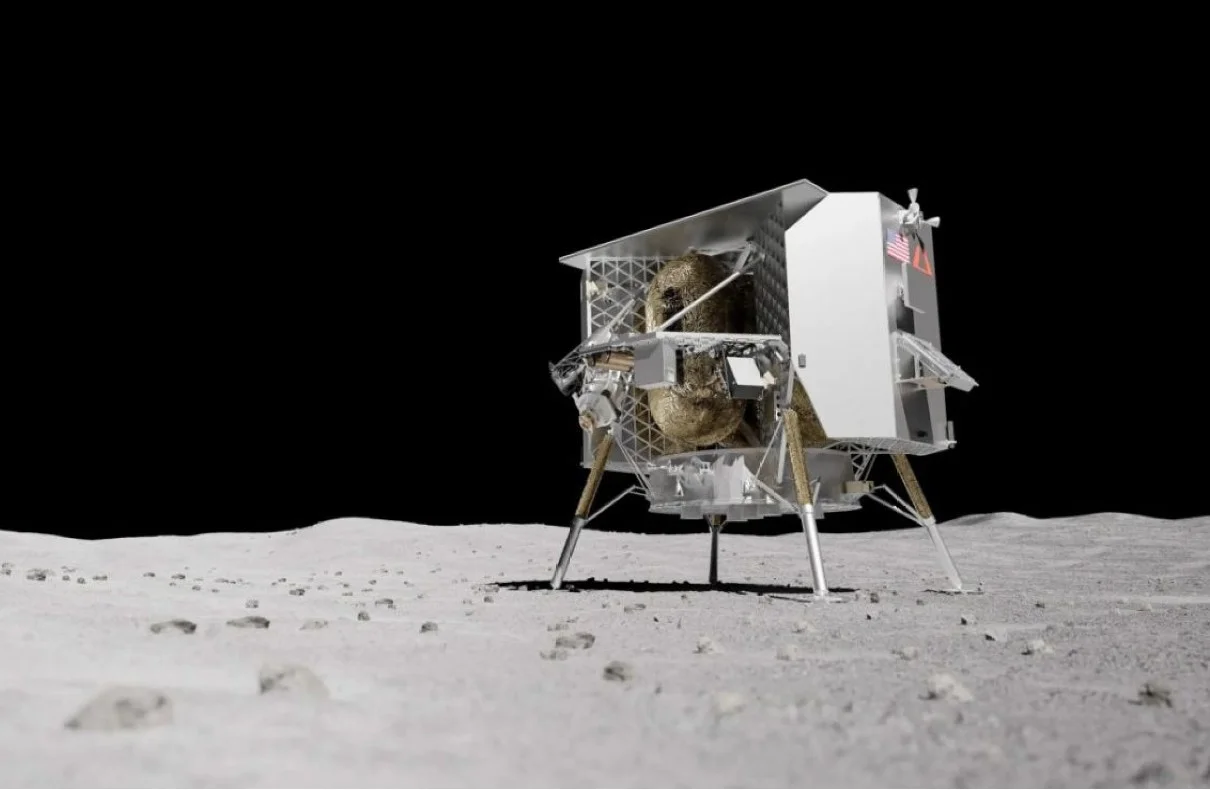
In a bold attempt to land on the Moon, Astrobotic’s Peregrine Lunar Lander mission faced a devastating setback. Despite the initial excitement and anticipation, the spacecraft encountered mechanical issues that prevented a successful lunar landing. As a result, the mission took an unexpected turn, leading to a fiery finale in Earth’s atmosphere.
Astrobotic’s Peregrine Lunar Lander mission began on January 8, when it was launched atop the ULA’s Vulcan rocket. This groundbreaking mission aimed to become the first American commercial landing on the Moon in decades. Equipped with five NASA science instruments and numerous other payloads, Peregrine was poised to make history under NASA’s Commercial Lunar Payload Services (CLPS) program.
However, shortly after separating from the Vulcan rocket, Peregrine encountered a critical fuel leak. This propulsion system failure dealt a severe blow to the mission’s chances of a successful lunar landing. Astrobotic realized that they had no choice but to abort the landing attempt and reassess the situation. The dream of a soft landing on the Moon was shattered, and the mission took an unforeseen trajectory back towards Earth.
A Hidden Jurassic Secret: An Almost Perfect Titanosaurs Skeleton Found
Astrobotic faced a difficult decision regarding the fate of the Peregrine Lunar Lander. After careful consideration, working closely with NASA and receiving input from the space industry, the company made the choice to let the spacecraft burn up during re-entry into Earth’s atmosphere. This decision was made to prevent the creation of debris around the Moon and preserve the future of cislunar space.
Although the exact date of Peregrine’s re-entry into Earth’s atmosphere was not provided, the company anticipated that it would occur in the coming days. Despite the setback, the spacecraft remained operational during its spaceflight, providing power to payloads and capturing images from deep space. Astrobotic’s CEO, John Thornton, expressed pride in the team’s efforts and expressed confidence in future missions.
Astrobotic conducted a thorough analysis to understand the cause of the propulsion system failure that led to the fuel leak. The working theory suggests that a faulty valve caused the oxidizer tank to pressurize beyond its limits, resulting in a rupture and the failure of the spacecraft’s propulsion system. The investigation is ongoing, with data being transmitted to Earth via NASA’s Deep Space Network.
NASA’s Commercial Lunar Payload Services (CLPS) program played a crucial role in the Peregrine Lunar Lander mission. This program aims to leverage the capabilities of commercial companies to transport payloads to the Moon, reducing costs and increasing the frequency of lunar missions. By partnering with private companies like Astrobotic, NASA hopes to pave the way for sustained human presence on and around the Moon in the near future.
The Impact of Screen Time on Toddlers Language Development
Astrobotic’s experience with the Peregrine Lunar Lander mission provides valuable lessons for future lunar missions. Space exploration is an unforgiving environment, and setbacks are to be expected. Astrobotic’s perseverance and determination in the face of challenges demonstrate the resilience required for successful missions. The insights gained from this mission will contribute to the advancement of CLPS and inform future lunar landing attempts.
The Peregrine Lunar Lander mission adds to the list of lunar landing attempts that have taken place in recent years. While Peregrine encountered obstacles, other countries and companies have experienced both success and failure in their own missions. India’s Chandrayaan-3 successfully reached the Moon’s surface in 2023, making it the fourth country to achieve this feat. China’s Chang’e fleet has also achieved significant milestones, including the retrieval of moon rocks in 2020.
Despite the challenges faced by the Peregrine Lunar Lander mission, the future of lunar exploration remains promising. Intuitive Machines, another U.S. space company, is scheduled to attempt a Moon landing as part of NASA’s CLPS Initiative in the near future. As technology advances and lessons are learned from previous missions, the prospects of successful lunar landings increase.
